This article was co-authored by Laura Marusinec, MD. Dr. Marusinec is a board certified Pediatrician at the Children's Hospital of Wisconsin, where she is on the Clinical Practice Council. She received her M.D. from the Medical College of Wisconsin School of Medicine in 1995 and completed her residency at the Medical College of Wisconsin in Pediatrics in 1998. She is a member of the American Medical Writers Association and the Society for Pediatric Urgent Care.
There are 17 references cited in this article, which can be found at the bottom of the page.
This article has been viewed 226,785 times.
Dealing with itchy skin, also called pruritis, often depends upon the cause of the itch. In general, it’s best not to scratch an itch because you could worsen the underlying cause, irritate your skin further, or cause an infection. There are many ways you can treat itchy skin without scratching and resist the immediate temptation to scratch.
Steps
Resisting the Immediate Temptation
-
1Keep your fingernails trimmed short. Short fingernails make it more difficult to scratch. If you prefer to your nails long, wear gloves to avoid scratching, especially at night.
-
2Scratch or press around the area that is irritated but not on it. The gate control theory of pain suggests that applying pressure and stimulation to another area can distract you from the itch and actually alleviate some of the pain.[1]
- Snap a rubber band on your wrist when you feel the urge to scratch. Some people press an X into their skin near an itchy spot such as a mosquito bite. These are both examples of the gate control theory of pain at work to stop you from scratching.
Advertisement -
3Rub the inside of a banana peel on an itchy surface. Compounds in the peel are known to decrease the itch.[2]
-
4Use an ice cube or a cool, wet compress. A melting ice cube on an itchy patch of skin can provide cooling relief. A cold, damp washcloth can also sooth the site.[3]
- Take a clean washcloth and wet it in cold water. Wring out most of the water, leaving the cloth damp but not dripping. Gently apply the cloth to your itchy spot and allow it to rest there as it provides some relief.
- Applying a slice of cucumber or a cotton ball soaked in apple cider vinegar also has the same cooling effect.
-
5Find a distraction. Getting your mind off the itch is sometimes all you need. Mothers of children with eczema well know the benefit of having toys, video games, TV, physical activity, and even tickling as a way to keep their kids from scratching.[4]
- Squeeze a stress ball instead. If you like working with your fingers, try knitting or crocheting when you feel the urge to scratch. Keeping your hands busy is a good way to prevent scratching.
-
6Pull a very soft cloth gently over the site. Use a soft clean cloth to gently caress the itchy skin without irritating the site.[5] You can also cover the area with a nonstick bandage instead of a soft cloth.
Using a Home Remedy
-
1Use clay. Bentonite clay, also called shampoo clay, has been shown to be effective in treating eczema and diaper rash and can be found in many natural health stores.[6]
- Stir green clay with a bit of water into a peanut butter-like paste and apply to the skin. Let it dry then peel it off, taking away irritants that may have been making you itchy.
-
2Take a lukewarm bath with uncooked or colloidal oatmeal. Oatmeal contains compounds that reduce inflammation and irritation.[7]
- Most pharmacies sell oatmeal preparations to add to your bath water.
- You can also add a bit of water to a cup of uncooked oatmeal, let it soak for a few minutes, then apply it as a paste to the irritated area.
-
3Wear loose, cotton clothing[8]
- Loose clothing prevents any friction irritation. Cotton is the friendliest and coolest of fabrics to wear over irritated skin as it won’t scratch and is breathable.
-
4Apply peppermint oil. Many natural health shops sell essential oils such as peppermint, which often comes in a roller you can apply directly to the skin.[9]
- Leaves can also be crushed and mixed with a small amount of water to make a paste to gently apply to your skin.
- Cool wet peppermint tea bags can also be applied directly to the skin.
-
5Use hypoallergenic soaps without dyes and perfumes[10]
- Hypoallergenic means that the item you are using has been tested to be free of chemicals such as scent or colour that would irritate the skin.
-
6Avoid scented detergent. Also try putting your clothes through a second rinse cycle.[11]
- Scented detergent often has chemicals that can further exacerbate already irritated skin.
-
7Apply aloe vera. If you have a plant at home, just break off a tip of the plant and squeeze some of the natural aloe onto your skin and gently rub it in[12]
- Be sure to not use your fingernails when applying the aloe or you could irritate your skin further.
-
8Reduce stress and anxiety. Stress increases the cortisol level in your bloodstream, making your skin hypervigilant to infection and causing an inflammatory response.[13]
- Talk to your doctor if you have chronic stress and anxiety. There are many ways you can naturally deal with stress.
Addressing the Cause
-
1Relieve dry skin. Dry skin is common in the winter, especially when the heaters are on and the moisture is being sucked out of the air. Moisturize unbroken skin with a thick cream to relieve itchiness at least twice a day, especially right after bathing.[14]
- Keep baths and showers short and not too hot to reduce further drying of your skin.
-
2Monitor for allergic reactions. Soaps and household chemicals, certain fabrics, and cosmetics can elicit allergic reactions that cause your skin to be itchy. If you suspect one of these culprits, change or eliminate them one at a time to determine which is irritating your skin.[15]
- Environmental allergens such as grass and pollen, plants such as poison ivy, and pet dander can cause skin irritation and you may want to discuss allergy testing with your physician.
- Food allergies can also manifest as skin irritation. If you suspect you have a food allergy, begin a food journal where you write down everything you eat, and make an appointment to see your doctor to discuss allergy testing.
-
3Assess rashes and skin conditions. Dermatitis, eczema, psoriasis, scabies, lice, and chicken pox are common skin conditions from which you get itchy.[16]
- Scabies is particularly common in children and is often overlooked as a diagnosis. Also called the itch mite, the scabies parasite burrows under the skin and its bites mimic an allergic reaction.[17]
- Your doctor can recommend treatment for all of these conditions. Be sure to act promptly for greatest relief and to prevent spreading.
-
4Know that itchiness is common if you have any internal or nervous system disorders. If you know you have celiac disease, anemia, a thyroid disorder, diabetes, multiple sclerosis, shingles, cancer, or kidney or liver disease, consider that the itchiness might be a result of your illness.[18]
- Itchiness as a result of these illnesses usually affects the entire body.
-
5Think about your medications. Itchiness is a common side effect of many medications. Talk to your doctor or pharmacist if you are concerned about the medications you are taking.[19]
- Antibiotics, antifungals, and narcotics commonly cause itchiness.
-
6Know that itchiness is common in pregnancy. If you are pregnant, you might be particularly itchy across your abdomen, breasts, thighs, and arms, as your skin accommodates the new life growing inside.[20]
-
7See a doctor. Be sure to connect with your physician particularly if your itching persists more than two weeks and is not eased by home remedies or life-style changes.[21]
- See a doctor sooner if your itch is associated with redness, fever, swelling, sudden weight loss, or extreme fatigue.
- Talk to your doctor if you have vulvar itching. Yeast infections and vulvar psoriasis and eczema can be difficult for you to distinguish yourself and you need proper medical treatment via prescribed creams and oral medications.[22]
- Males with jock itch may need antifungal medication. Men can get yeast infections, too. See your doctor for a check up.[23]
- Anal itching can be a result of dietary irritants, hygiene, dermatological conditions such as psoriasis, pinworms (common especially in children) or hemorrhoids. See your doctor for a diagnosis and appropriate treatment.[24]
Satisfying the Itch Medically
-
1Take medications as prescribed. If your cause is allergies, your doctor may prescribe antihistamine medications, or allergy pills. If you have an underlying illness, such as kidney disease, your doctor will prescribe different medications to take.[25]
- You may be prescribed a topical corticosteroid cream to put directly on the irritated area, depending on the site and cause. If your itching is severe, your doctor may prescribe an oral steroid or other oral or topical medications.
-
2Try phototherapy. Your doctor may recommend you have sessions of exposure to ultraviolet light, wherein certain wavelengths can control itching.[26]
- Phototherapy is a common treatment for itchiness related to the jaundice caused by liver diseases such as cirrhosis.
-
3Use a non-prescription cream. 1% hydrocortisone creams are available over the counter at most pharmacies and can be helpful on a short-term basis while the underlying cause is being treated.
- Do not use topical anaesthetics such as benzocaine on a regular basis without consulting a physician, as side effects can occur. Do not use topical anaesthetics on children.
- Calamine lotion is commonly used to relieve the itch of poison ivy and chicken pox.[27]
-
4Explore other medical options. If you cannot get your itch satisfied through conventional medical or home remedy means, discuss with your doctor the less common causes of itching related to pinched nerves, mental illnesses such as obsessive-compulsive disorder, or genetic illnesses such as epidermolysis bullosa.[28]
- Your doctor may even occasionally prescribe an antidepressant to help the itching.
References
- ↑ http://www.sciencedaily.com/releases/2015/03/150319075826.htm
- ↑ https://www.google.com/patents/US5972344
- ↑ https://www.mayoclinic.org/diseases-conditions/itchy-skin/diagnosis-treatment/drc-20355010
- ↑ http://itchylittleworld.com/2011/12/09/itchy-irritated-skin-scratching-little-fingers-part-two-distraction-techniques/
- ↑ http://www.babycenter.in/a536367/itchy-skin
- ↑ http://www.ncbi.nlm.nih.gov/pmc/articles/PMC4228529/#A14180R15
- ↑ https://myhealth.alberta.ca/health/Pages/conditions.aspx?hwid=aa67251
- ↑ https://www.mayoclinic.org/diseases-conditions/itchy-skin/diagnosis-treatment/drc-20355010
- ↑ http://www.ncbi.nlm.nih.gov/pmc/articles/PMC3813175/
- ↑ https://www.mayoclinic.org/diseases-conditions/itchy-skin/diagnosis-treatment/drc-20355010
- ↑ https://www.mayoclinic.org/diseases-conditions/itchy-skin/diagnosis-treatment/drc-20355010
- ↑ http://www.mayoclinic.org/drugs-supplements/aloe/evidence/hrb-20058665
- ↑ https://www.mayoclinic.org/diseases-conditions/itchy-skin/diagnosis-treatment/drc-20355010
- ↑ https://www.mayoclinic.org/diseases-conditions/itchy-skin/symptoms-causes/syc-20355006
- ↑ https://www.mayoclinic.org/diseases-conditions/itchy-skin/symptoms-causes/syc-20355006
- ↑ https://www.mayoclinic.org/diseases-conditions/itchy-skin/symptoms-causes/syc-20355006
- ↑ https://www.bcmj.org/articles/itching-skin-children#Table
- ↑ https://www.mayoclinic.org/diseases-conditions/itchy-skin/symptoms-causes/syc-20355006
- ↑ https://www.mayoclinic.org/diseases-conditions/itchy-skin/symptoms-causes/syc-20355006
- ↑ https://www.mayoclinic.org/diseases-conditions/itchy-skin/symptoms-causes/syc-20355006
- ↑ https://www.mayoclinic.org/diseases-conditions/itchy-skin/symptoms-causes/syc-20355006
- ↑ http://www.health.harvard.edu/womens-health/managing_common_vulvar_skin_conditions
- ↑ http://www.sharecare.com/health/mens-health/article/stop-jock-itch
- ↑ http://www.medicalnewstoday.com/articles/168728.php
- ↑ http://www.mayoclinic.org/diseases-conditions/itchy-skin/basics/treatment/con-20028460
- ↑ http://www.mayoclinic.org/diseases-conditions/itchy-skin/basics/treatment/con-20028460
- ↑ https://www.aad.org/stories-and-news/news-releases/treating-poison-ivy-ease-the-itch-with-tips-from-dermatologists
- ↑ http://www.nytimes.com/2014/02/18/health/itching-more-than-skin-deep.html
About This Article
To stop scratching your irritated skin, try holding an ice cube over the area to numb it and provide immediate relief. Alternatively, you can cover your skin with a soft cloth or bandage so you're less tempted to itch it. Even rubbing the inside of a banana peel on your skin can alleviate irritation because of the anti-itching compounds in the peel. If you have some aloe vera on hand, try rubbing that into your skin to reduce irritation. Whichever method you use, consider trimming your nails short so you're less likely to break the skin if you do accidentally scratch yourself. For more advice from our Medical co-author, like how to reduce itching by taking an oatmeal bath, keep reading!

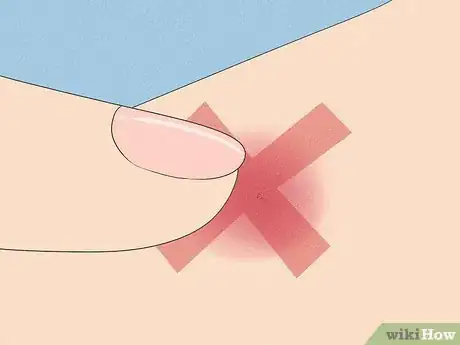
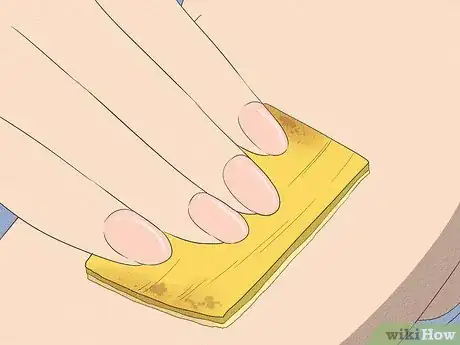
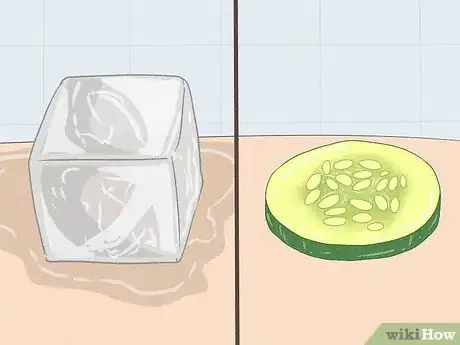
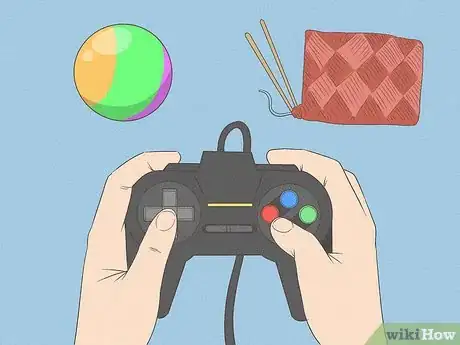
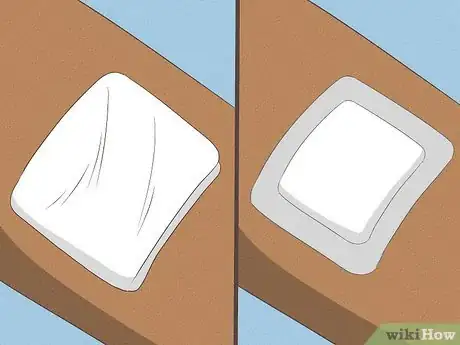
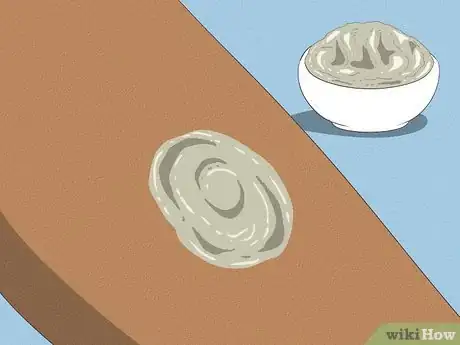
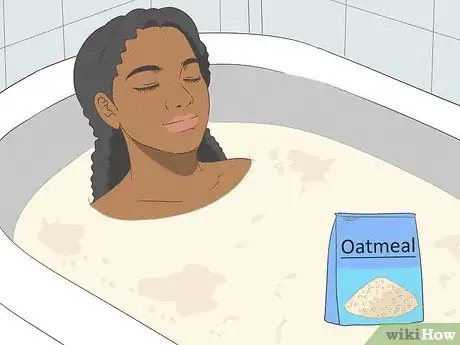
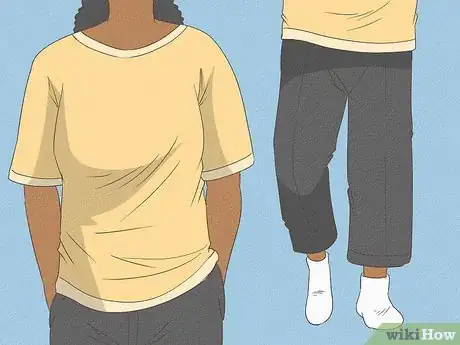
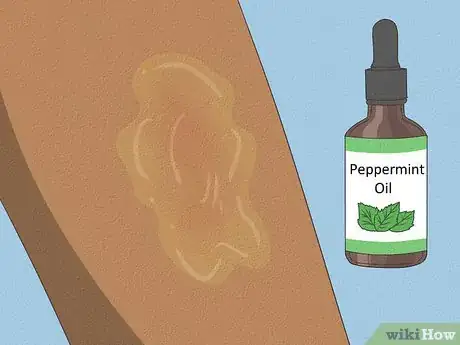
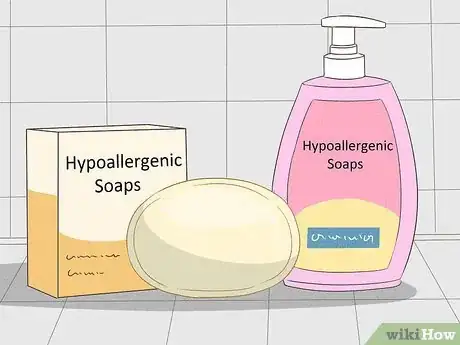
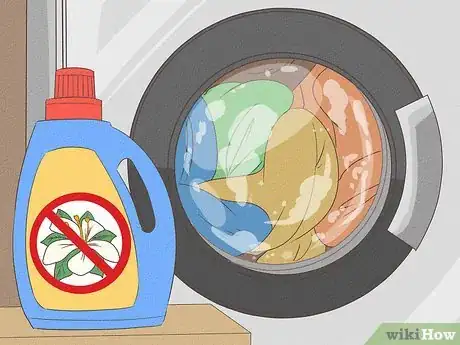
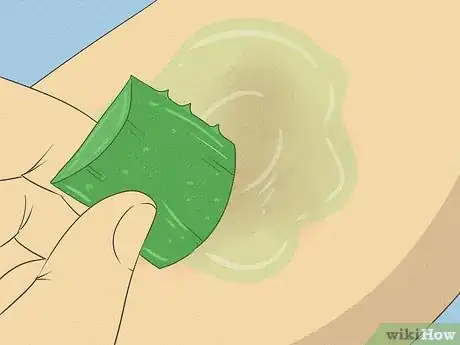

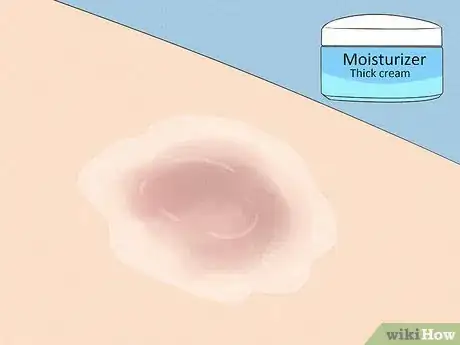
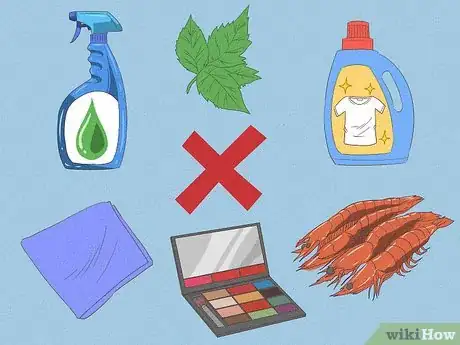
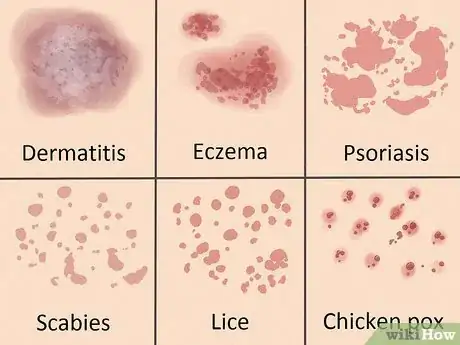

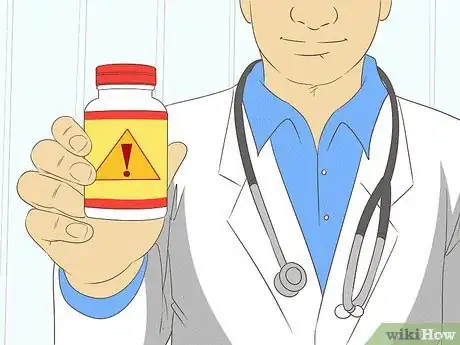

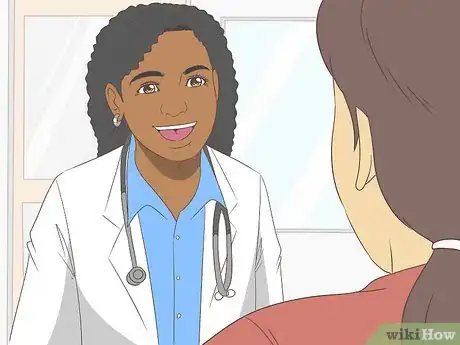
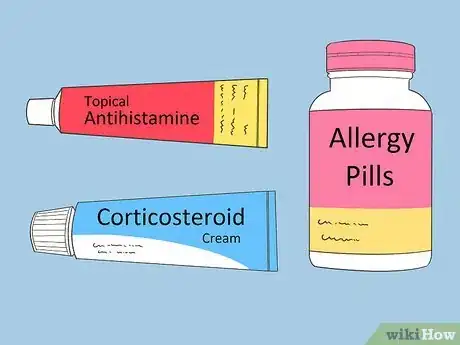

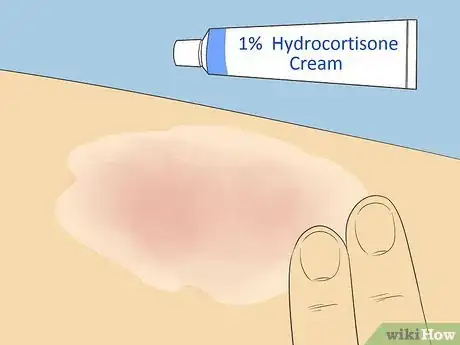

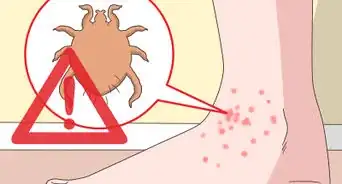
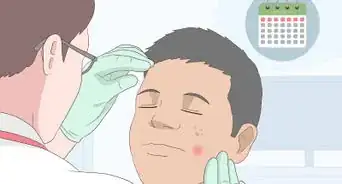
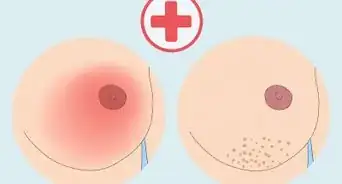
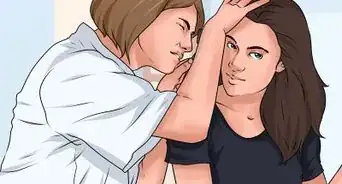
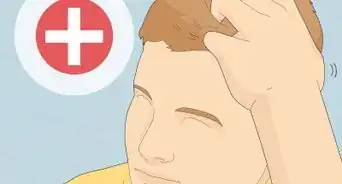

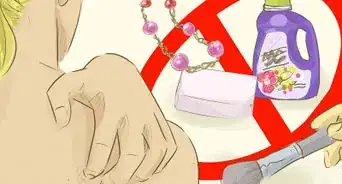

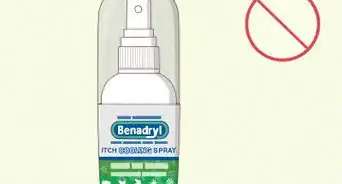
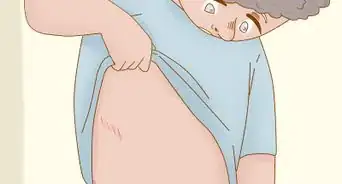
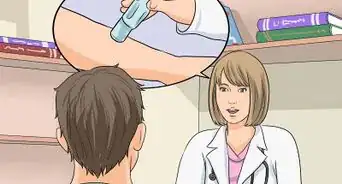
-Step-10.webp)













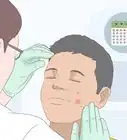
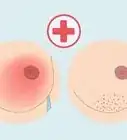




































Medical Disclaimer
The content of this article is not intended to be a substitute for professional medical advice, examination, diagnosis, or treatment. You should always contact your doctor or other qualified healthcare professional before starting, changing, or stopping any kind of health treatment.
Read More...